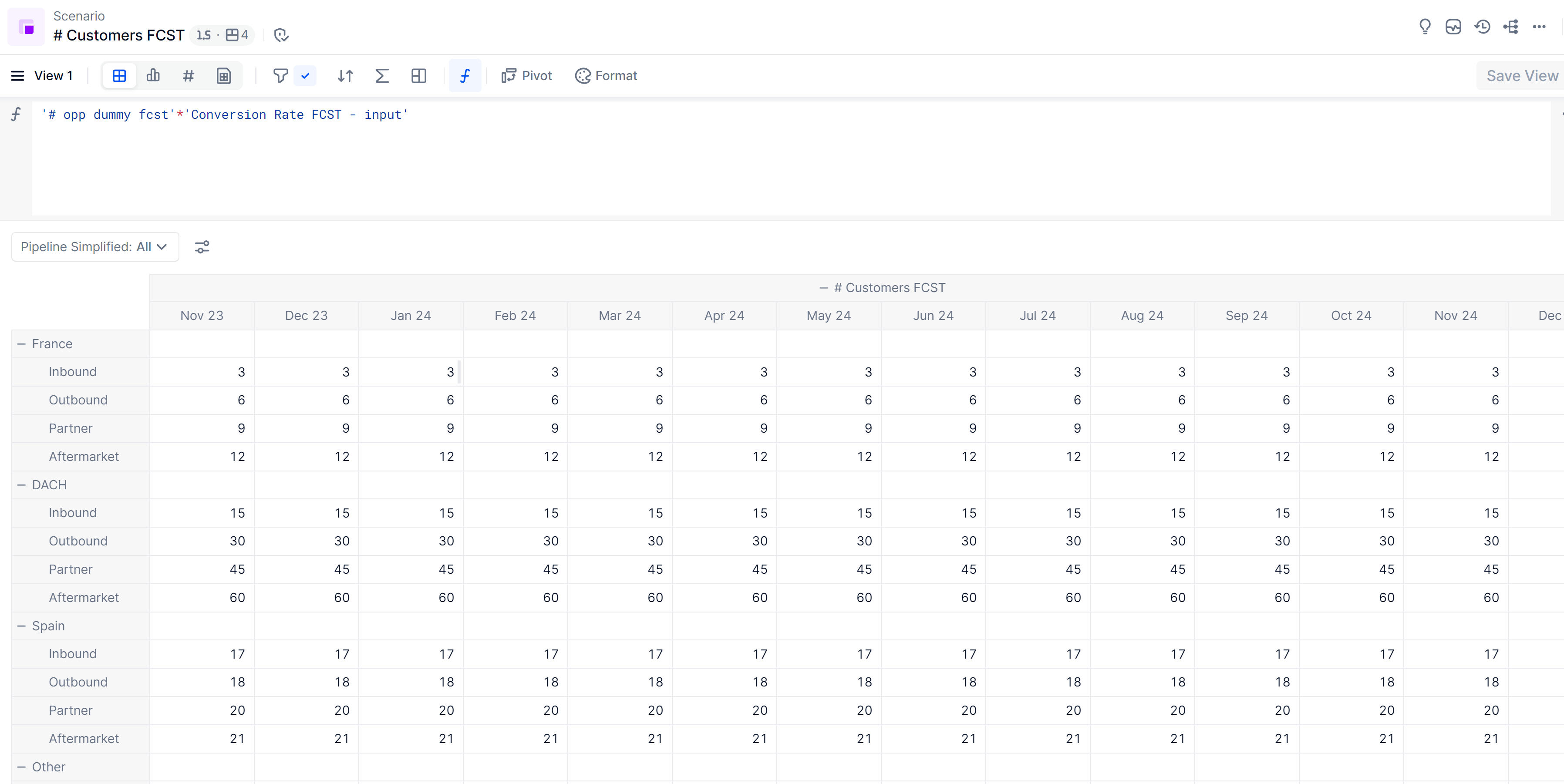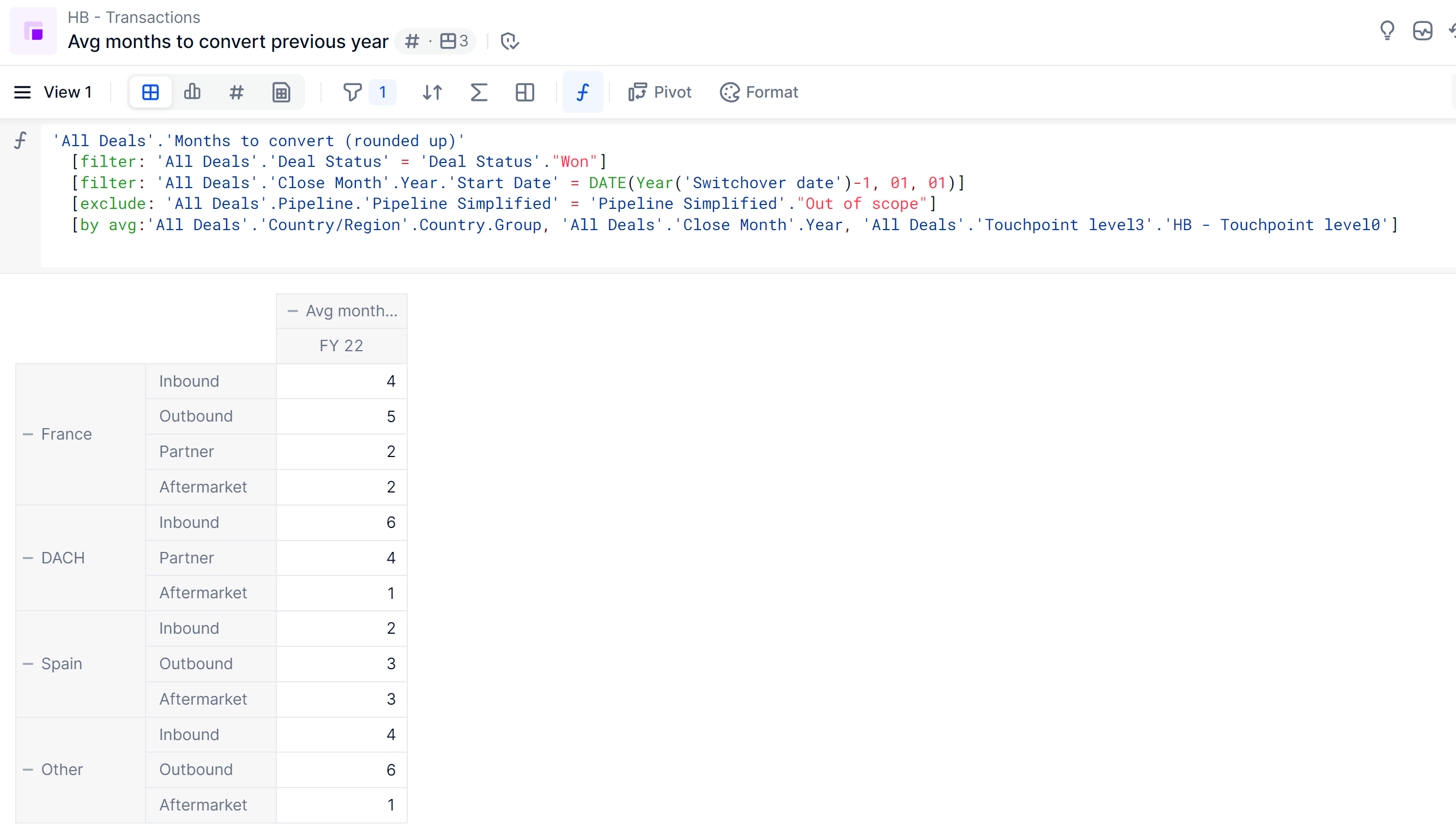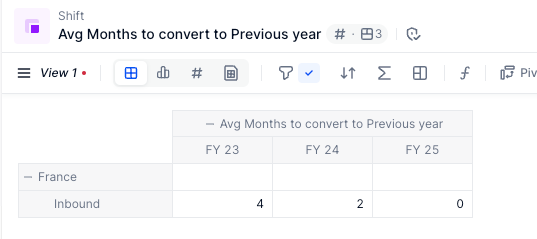Dear Pigment Community,
I'm currently tackling a challenge with a modeling project and could really use your expertise.
Goal: Forecast future customers using the average months to convert.
Issue: I have a metric for my forecasted number of customers, but I'm stuck on how to shift these values forward into the future based on my metric that calculates average months to convert.
Desired outcome: My ideal solution would take the forecasted customer values and shift them forward into the future by ‘x’ months based on what the average months to convert value is.
Please find images and further explinations bellow.


Example using the images above:
- metric[# Customers FCST]: France, Inbound Nov 23 value will be shifted to Mar 24, 4 months into the future because the metric[Avg months to convert previous year] value is 4.
I'm open to any suggestions or insights you might have to help me overcome this hurdle.
If you need any further details to grasp the problem better, please don't hesitate to ask.
Thank you all in advance for your invaluable help.
Darious






